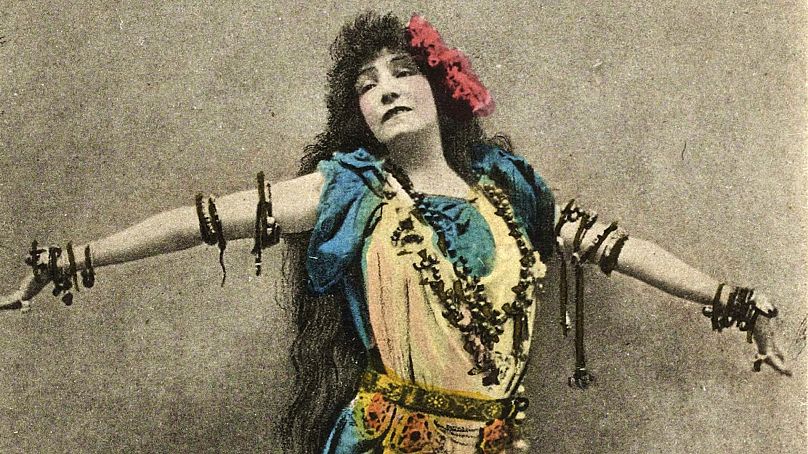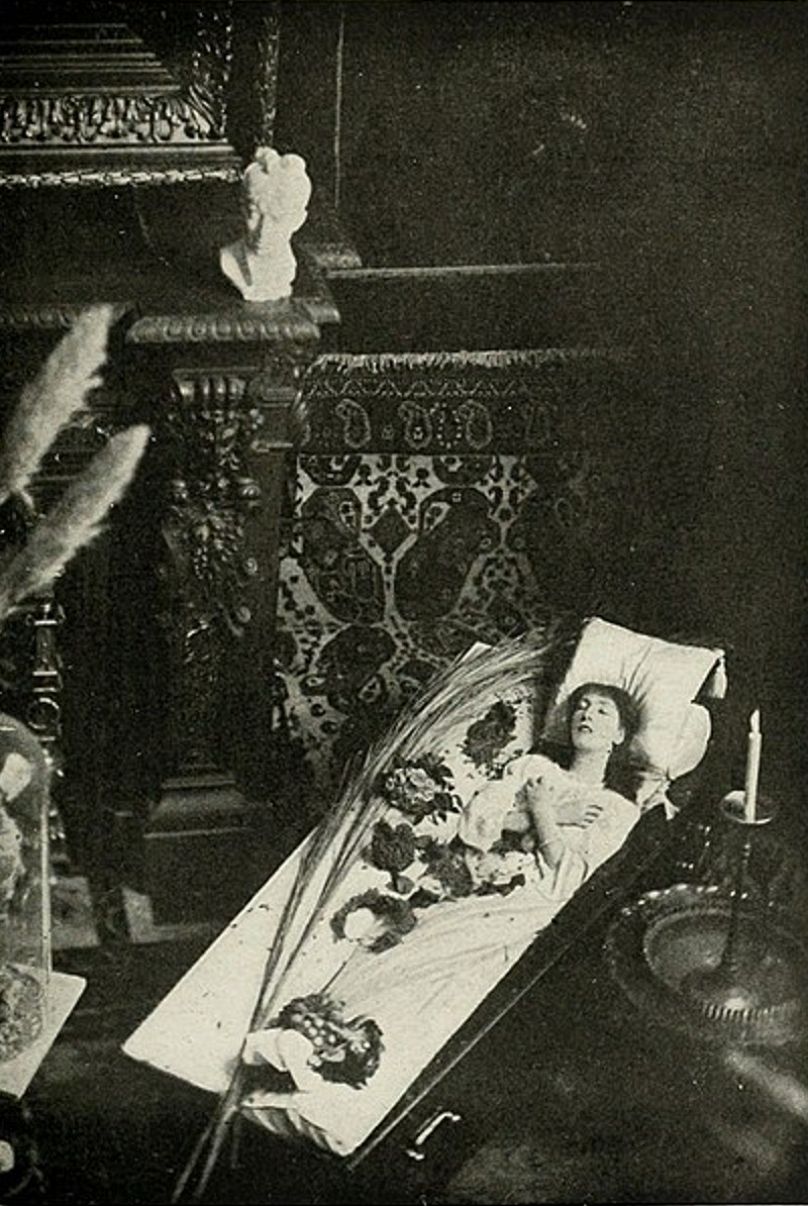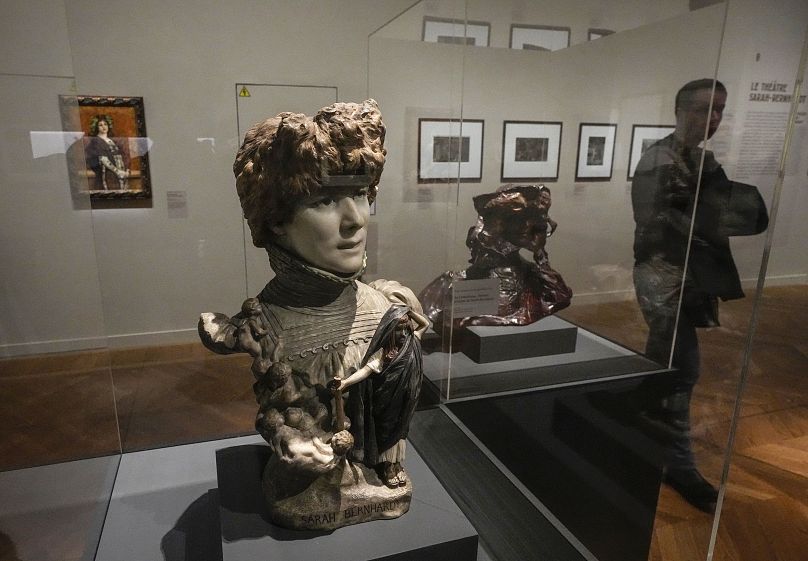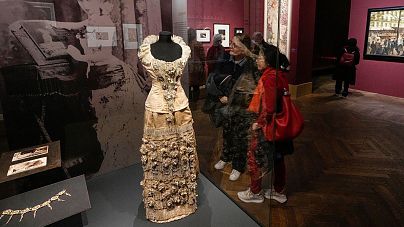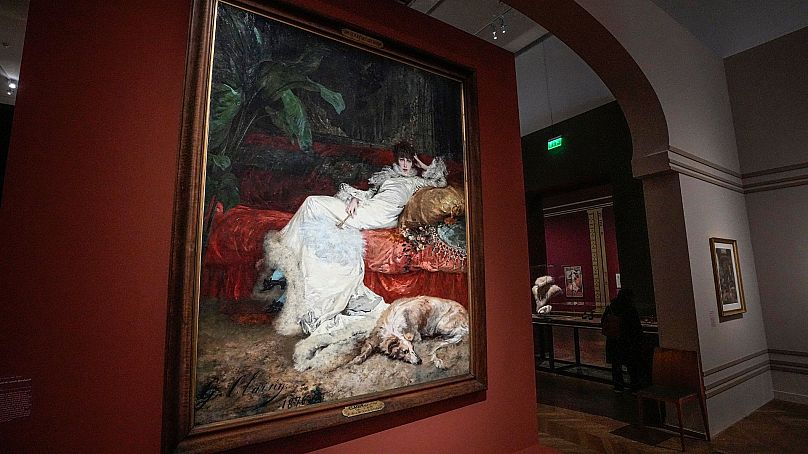Featuring nearly 400 works, including costumes, photographs, films, personal objects, paintings and sculptures, the exhibition explores Sarah Bernhardt's illustrious life and career.
A century after her death, Sarah Bernhardt, the pioneering 19th-century French stage star, remains an icon of popular culture.
The petite diva, known as “La Divine,” was one of the world’s most famous women by the time of her death in 1923, owed not just to her acting talent but her modern instinct for self-publicizing and using the press to brand her image.
Now, the Petit Palais museum in Paris has opened an exhibit exploring the many facets of Bernhardt’s life and career.
“Sarah Bernhardt: And the woman created the star” showcases around 400 works, including handwritten logs, photographs, costumes, films, recordings, paintings, sculptures, and personal objects, that delve well beyond her life on stage.
Who was Sarah Bernhardt?
Encompassing the fascinating life of Sarah Bernhardt is nigh-on impossible. There wasn’t much she didn’t or couldn’t do.
The artist was a global sensation during her lifetime; a hot-headed and rebellious free-spirit, a respected actress, the first influencer of fashion, an artist, a writer and an activist, who many consider paved the way for the likes of modern female celebrities breaking out into a man’s world and empowering themselves.
She dazzled Oscar Wilde, who wrote the play 'Salome' in French for her and called her “the incomparable one." American author Mark Twain once wrote: "There are five kinds of actresses: bad actresses, fair actresses, good actresses, great actresses – and then there is Sarah Bernhardt."
She was born Henriette Rosine Bernard and while a great deal of her childhood is shrouded in mystery, she was likely born in Paris in 1844.
She was educated at an exclusive convent school near Versailles where she announced her intention to become a nun. Instead, she fell in love with the theatre after her mother and the novelist Alexandre Dumas, author of 'The Three Musketeers', took her to the Comédie Française. She ended up studying acting from 1860 to 1862 at the famous Parisian Conservatory and took the stage name Sarah Bernhardt. She debuted on the Paris stage in 1862, playing the title role in 'Iphigénie', by the playwright Jean Racine.
She was forced to leave the Comédie Française after refusing to apologise for slapping an established actor, and later made a name for herself during the Universal Exhibition of 1878, escaping in a hot air balloon over the Tuileries garden, where she sliced the neck off a bottle of champagne with a sword and tasted foie gras. She said she did this to escape the bad smell of Paris.
Bernhardt was frequently typecast as a femme fatale but was an incredibly versatile performer, boasting an unusual and warbling voice. She later returned to the Comédie Française to perform some of her most celebrated roles before setting up her own company and setting off on a two-year tour of England and the US.
She was one of France’s most prolific gender-benders, famously quoted as saying that she needed to play male characters to feel less restricted. At the age of 56, she decided to play Hamlet, and on one US tour she alternated between playing Portia and Shylock in 'The Merchant of Venice'.
The US were enamoured with her and she was greeted as a celebrity there during her 1912-13 American tour, even though few could understand her French language performances.
Not that that would have bothered her. Bernhardt's personal motto was “Quand même”, which essentially translates to “so what?”.
Bernhardt also had something of a gothic personal style, one which matched her penchant for taking on tragic roles. Considering she suffered from having one lung, one kidney and later in life only one leg, there was an aura of darkness and mystique about her. (An apocryphal tale told by master storyteller Tom Waits states that the late music producer Hal Willner, who passed away due to coronavirus complications aged just 64 in 2020, apparently purchased Sarah Bernhardt’s wooden leg – as well as Bela Lugosi’s wristwatch and a headscarf worn by Karen Carpenter.)
Bernhardt played up to this gothic image, and always saw the potential of fuelling gossip. She even famously paid for a padded coffin to be installed in her home and hired a photographer to snap her sleeping in it. She even acquired a pet baby alligator, whom she named Ali Gaga, a pet that died of liver failure reportedly because Bernhardt nourished it only on champagne.
She was – by today’s standards – bisexual, and when she met the artist Louise Abbéma in 1874, the two were involved until the former's death. Since Bernhardt was also an amateur sculptor, the two women often depicted their love through their art. She was later married to a Greek military officer, who suffered from a crippling opium addiction.
Sarah Bernhardt was arguably the world’s most famous woman when on 26 March 1923 and a huge crowd turned out to see her funeral procession as it wound its way to Père-Lachaise cemetery, to pay their respects to a talent unlike any other.
What is on display at the exhibition?
The exhibition starts at the dawn of Bernhardt's career, with a handwritten log in the official Parisian Register of Courtesans from the 1860s, which features a photograph of her and descriptions of her activities as a young “courtesan.”
It then loosely guides visitors through the chronology of her life, from her beginnings on stage after Alexandre Dumas took her to the Comédie Francaise, to her most famous roles such as Joan of Arc, Phaedra, and Cleopatra.
Dazzling costumes worn at the Theatre Sarah Bernhardt are also showcased at the exhibition, which were for Americans then an emblem of Paris at the dawn of the modern fashion industry.
The Theatre Sarah Bernhardt at Chatelet has since been renamed the Theatre de la Ville, while all that remains in the building bearing her name is a café-restaurant.
"In this exhibition we can see many dresses and jewels worn by Sarah Bernhardt on stage but we also insist on the more personal character of the star, we have many personal objects that belonged to her, jewels but also toiletries," explains Stephanie Cantarutti, the curator of the exhibit.
The exhibit also highlights Bernhardt's role as a trendsetter in advertising. At her time, she was very aware of the power of advertising and was recognized in advertisements for brands such as rice powder, alcohol, and biscuits. The exhibit features some of these campaigns, such as the 'La Diaphane' campaign for rice powder cosmetics and the 'Lu' biscuits campaign drawn by Alfons Mucha.
Cantarutti says that Bernhardt was more than a famous actress and that she paved the way for many, including Marilyn Monroe, Greta Garbo, Madonna, Lady Gaga, and Beyoncé.
Another highlight of the exhibition is the spectacular portrait of Bernhardt that was painted in 1876 by her friend Georges Clairin.
The painting, which embodies the Art Nouveau style with its flowing curves and iridescent hues, depicts Bernhardt wearing a white satin dress and exuding an intentionally careless demeanour.
While the portrait remained in Sarah Bernhardt's possession throughout her life, after her passing, her son Maurice donated it to the Petit Palais where it continues to preserve the legacy of the celebrated actress.
“Sarah Bernhardt: And the woman created the star” runs until 27 August 2023 at the Petit Palais in Paris.
Check out the video above for a look inside this fascinating exhibition.












